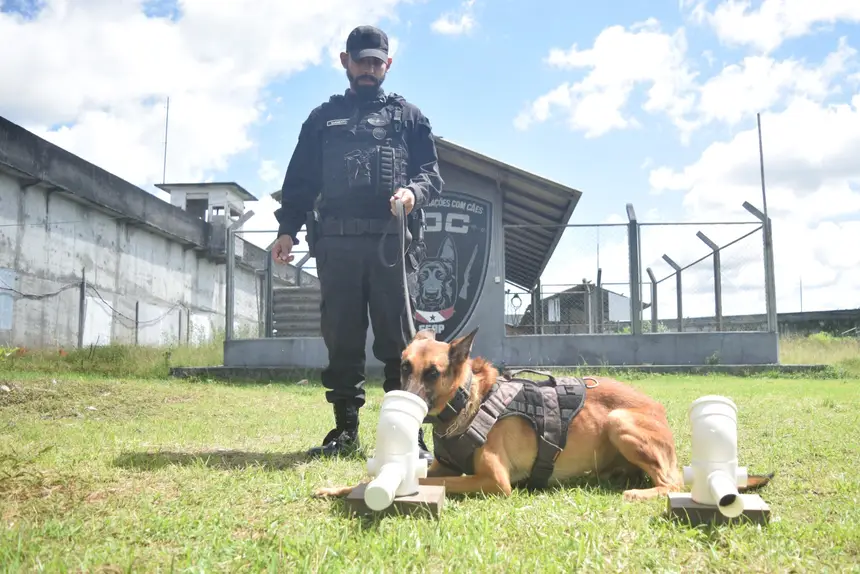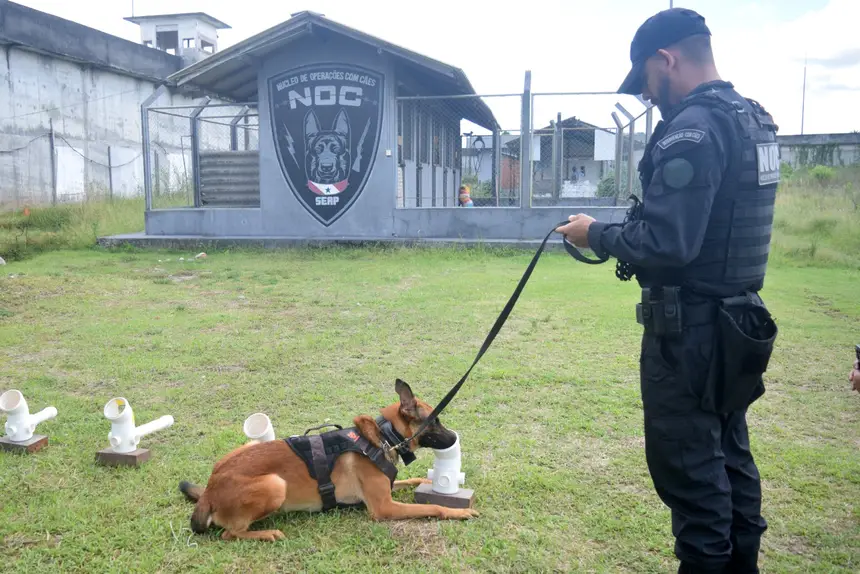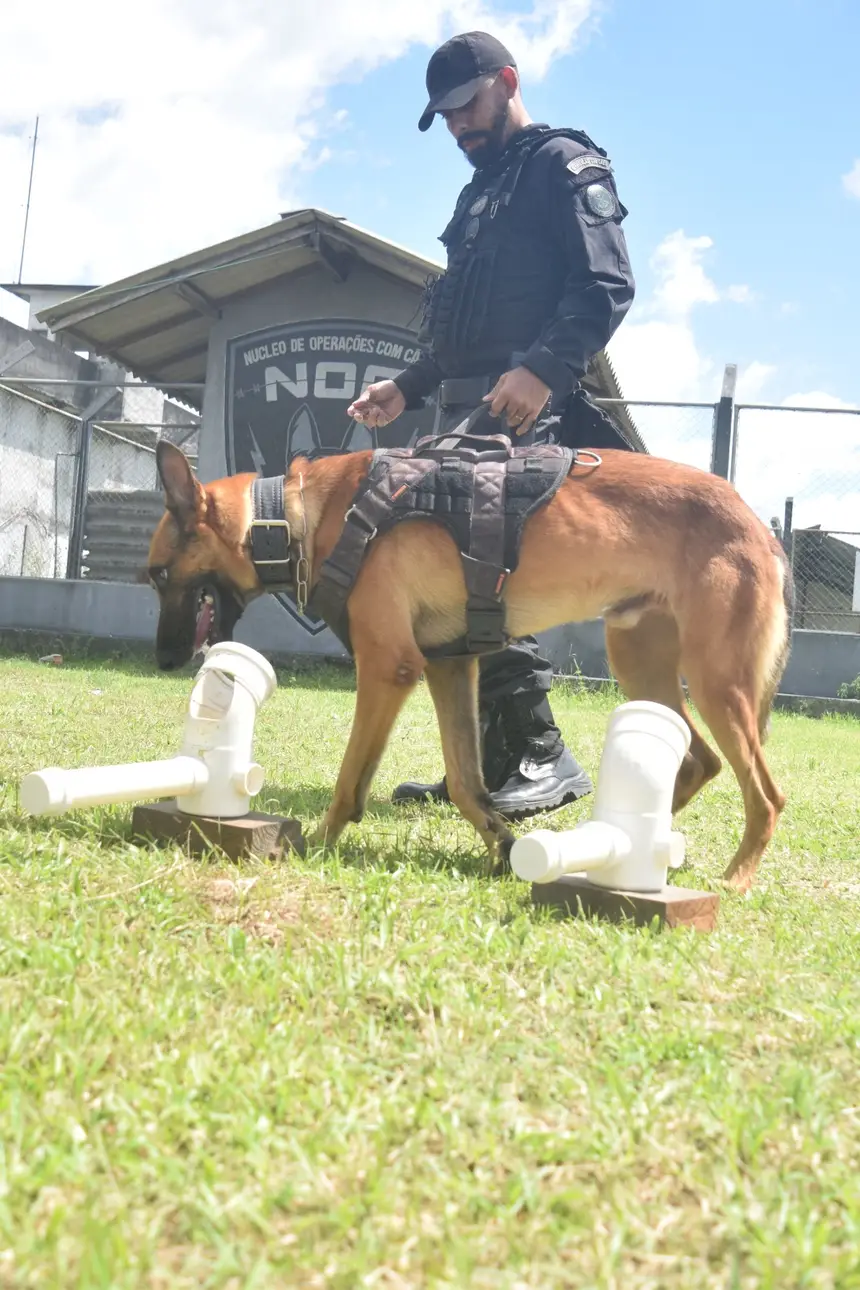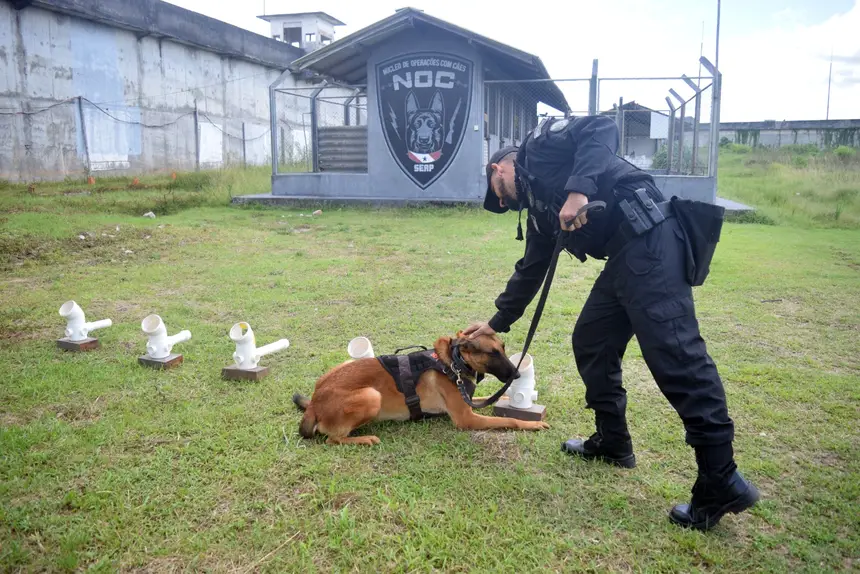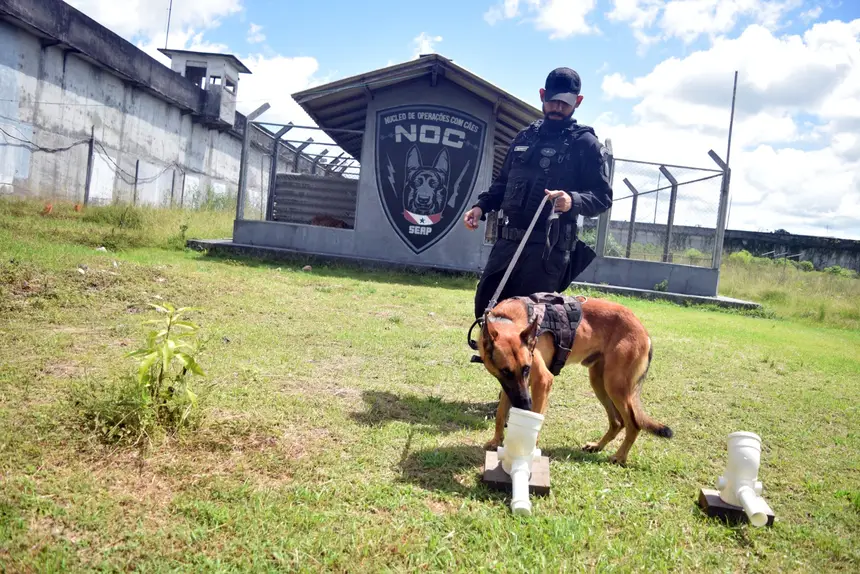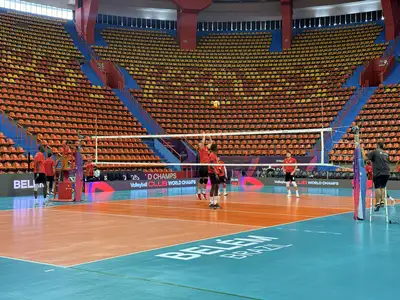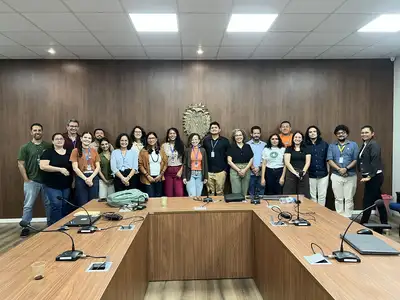Safety in the penal units of Pará is ensured with the crucial assistance of the Canine Operations Center (NOC) of Seap
With agility, intelligence, and training, dogs reinforce search and control actions in the Pará prison system
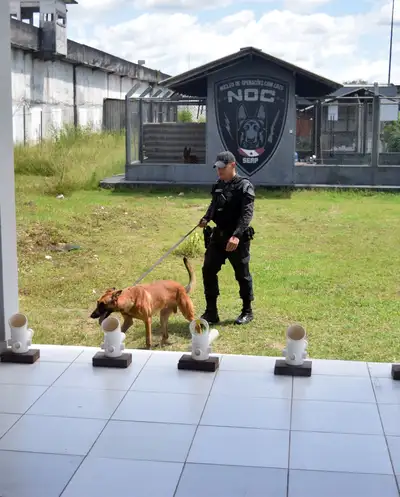
In the daily surveillance of the Santa Izabel Penitentiary Complex in the Metropolitan Region of Belém, a highly effective force stands out in security operations: the dogs of the Canine Operations Center (NOC) of the State Secretariat of Penitentiary Administration (Seap). Established in 2021, the group directly supports search teams, controls the movement of detainees, and detects possible illicit items and prohibited objects within the units.
Currently, the NOC has 4 dogs - two intervention dogs (Max and Tander), one narcotics detection dog (Atos), and one search and capture dog (Baruke), all of the “Belgian Shepherd” breed, known for its intelligence, agility, obedience to verbal commands, and constant energy, as well as being an attentive and loyal animal.
Thunder and Max primarily assist the Penitentiary Action Group (GAP) during inspections in the cells and blocks of the complex. The younger dogs are being trained to become scent detectors, focusing on search and capture missions, as well as drug identification.
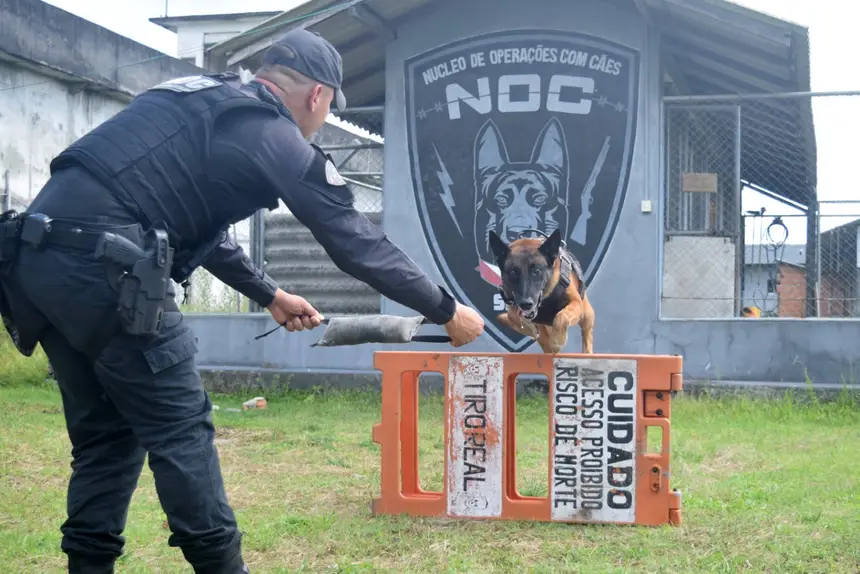
Training - Throughout the training process, the focus is on ensuring that the animal receives ethical and appropriate treatment, aiming for its development as a police dog. The 9 operators responsible prioritize a humane and respectful care, ensuring high standards of animal welfare. This care directly contributes to the dogs performing their activities efficiently and responsibly.
The dogs are carefully prepared to get accustomed to the prison system environment, so they can act in protecting the police team in situations such as riots, rebellions, or other crises.
They can also be employed in the movement of detainees from the cells to the yards, especially during searches conducted in the penitentiary blocks.
To this end, all training is conducted weekly, always guided by an operator, and includes various techniques and learning strategies for the best qualification of the animal for action.
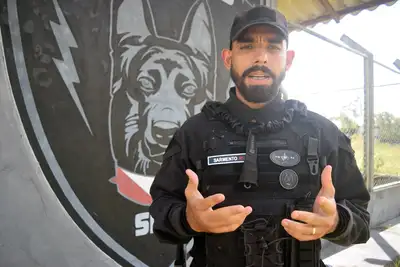
The cooperation of the dogs is applied as a significant reinforcement both inside and outside the blocks, as pointed out by the NOC coordinator, Kassio Sarmento. “This work can be done both inside the cell blocks during searches and in the kits that families bring for the inmates. So, many times, what may go unnoticed by the operator's vision, the dog can easily identify, as it has a more acute sense of smell, with over a million olfactory cells.”
Penal officer S. Junior explains in more detail the work with dogs in the prison unit. “The dog is a tool to assist police work. And, in this sense, we operators use the animal's natural instincts, channeled there for police function. So, this tool is fundamental, as it helps in our police work. Thus, we can have more effectiveness at the moment of an action,” he concludes.
Text: Fernanda Ferreira/Intern NCS Seap Pará


